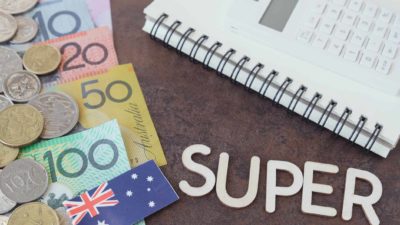Retirement is hopefully one of the most enjoyable stages of life. The golden years can be great, but perhaps also expensive. How are we supposed to know how much money we'll need to last the rest of our lifetimes?
The first suggestion I'd make is that a good financial planner can help work out an individual's specific targets and goals, as well as a plan.
What I'm going to talk about in this article are two broad strategies when it comes to retirement nest eggs, but remember they are just suggestions.
It'll take quite a bit of planning to figure out how much is needed for spending in retirement.
According to the AFSA retirement standard, for retirees who own their home, a comfortable lifestyle costs around $71,000 per annum for a couple and around $50,000 per annum for single retirees. A modest lifestyle would reportedly cost around $46,000 per annum for a couple and $32,000 per annum for a single retiree.
Withdrawal method
One idea is the '4% rule' safe withdrawal rate for retirement.
If we have an investment portfolio, we can decide to withdraw 4% of the portfolio balance each year, and then make inflation adjustments to that withdrawal amount in dollar terms each year. It could supposedly safely last approximately three decades. People could choose to do this method with a 3% rule, or another number that would hopefully be sustainable.
There are a couple of key variables when it comes to this strategy.
First, how large is the investment portfolio? With a $1 million balance, year one would have a $40,000 withdrawal amount with a 4% rate. A $2 million portfolio would enable a $80,000 withdrawal amount. However, a balance of 'only' $500,000 would lead to a withdrawal amount of $20,000 which would likely not be enough to fund an adequate lifestyle.
Second, the returns of the investment portfolio are key to how sustainable the strategy is.
For example, if the retirement investment portfolio makes an average return per annum of 8% and we're only withdrawing 4% then the portfolio balance could increase over time. However, if there is a crash at the start of retirement, then withdrawing the expected 4% of the original balance could mean eating into more of the portfolio balance than expected – that's called sequencing risk.
I'd suggest that a tactic to deal with this problem would be to have some cash set aside to access during a crash so we're selling assets at discounted prices.
If I were looking to go down this path for retirement, I'd also want to invest in shares that I think would have a good chance of producing long-term capital growth such as globally-focused exchange-traded funds (ETFs) like the Vaneck Morningstar Wide Moat ETF (ASX: MOAT), VanEck MSCI International Quality ETF (ASX: QUAL) and Vanguard MSCI Index International Shares ETF (ASX: VGS).
Dividends
Another way to go could be to live off the dividend income produced by a portfolio of ASX dividend shares.
There are plenty of businesses on the ASX that share some of their profit each year in the form of dividends (or distributions) with shareholders. If we own businesses for the passive income then we don't have to worry about when to sell shares. It also means that we don't need to trigger any capital gains tax events.
One of the benefits of investing in ASX dividend shares is that Australian tax-paying companies can attach franking credits to the dividend payment, boosting the after-tax yield.
If we had a $1 million investment portfolio with a 4% dividend yield, it'd produce $40,000 of annual income in year one. If the businesses increased their payout on average by 5% in the next year, we'd get $42,000 of annual income.
I like the idea of building a stream of dividends that is bigger than our necessary/desired retirement expenditure, and that grows faster than inflation.
The sort of businesses I'd look at to deliver resilient retirement dividend income would be Washington H. Soul Pattinson and Co. Ltd (ASX: SOL), Wesfarmers Ltd (ASX: WES), Brickworks Limited (ASX: BKW), Metcash Ltd (ASX: MTS), APA Group (ASX: APA), Sonic Healthcare Ltd (ASX: SHL) and Rural Funds Group (ASX: RFF).
Foolish takeaway
I'm using a mixture of both strategies to build my portfolio with retirement in mind. I'm looking for dividends and capital growth.
I'd suggest that withdrawing more than 4% or aiming for a dividend yield of 4%, may be a bit more risky in the longer term.








